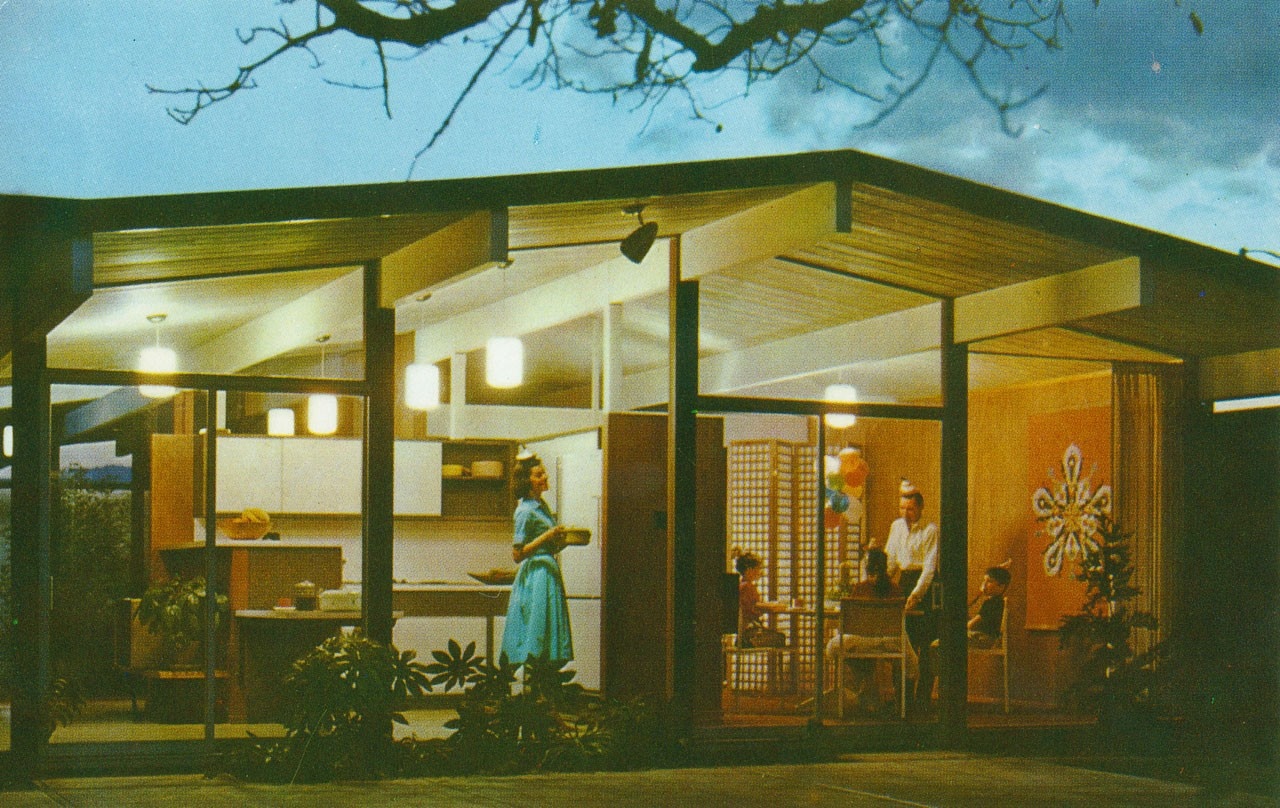
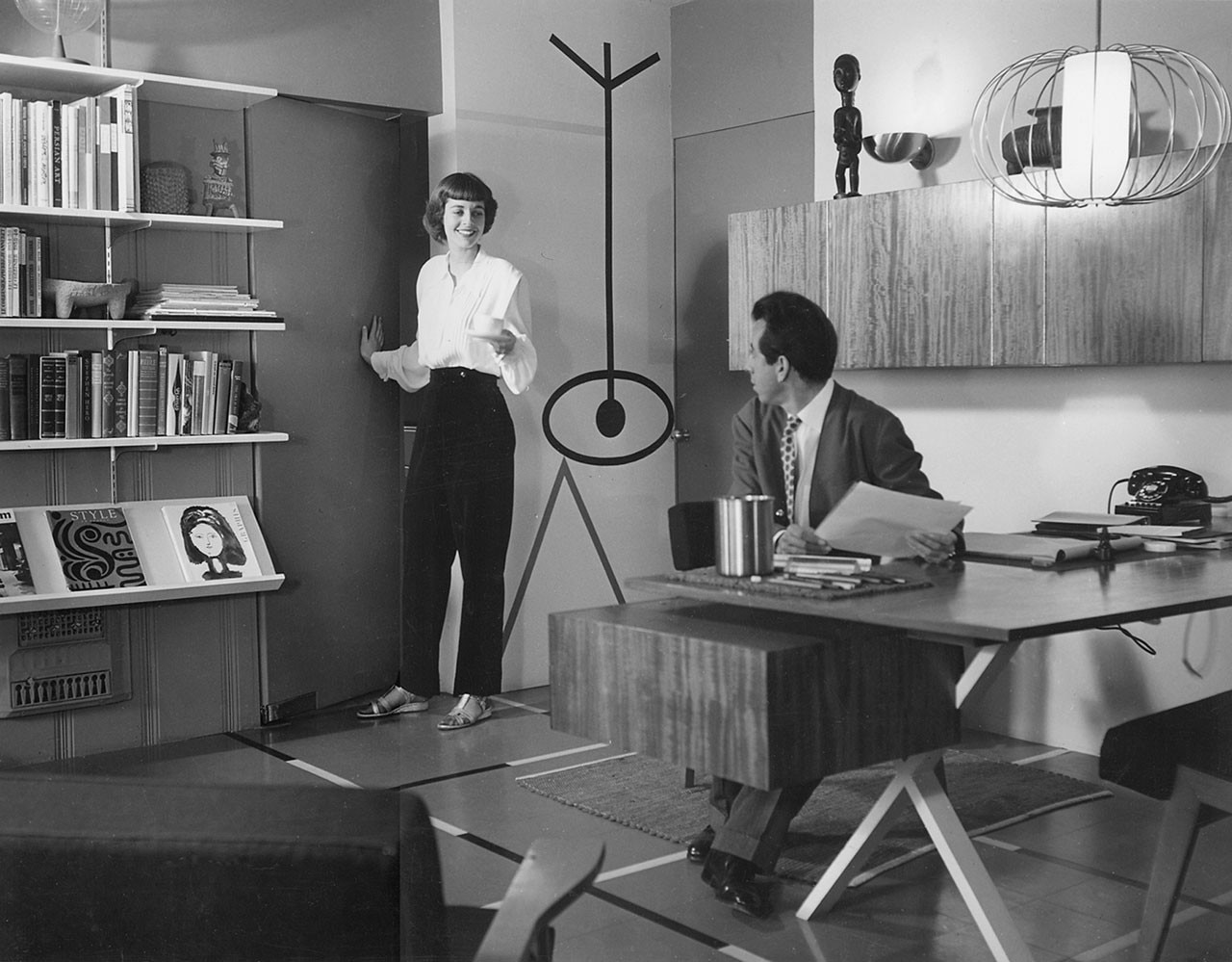
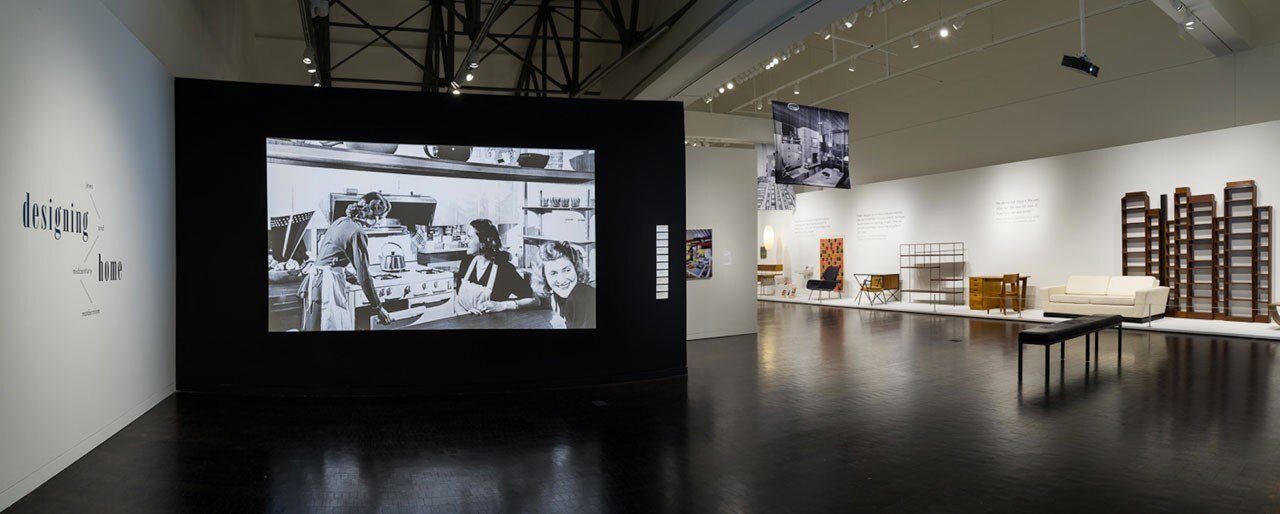
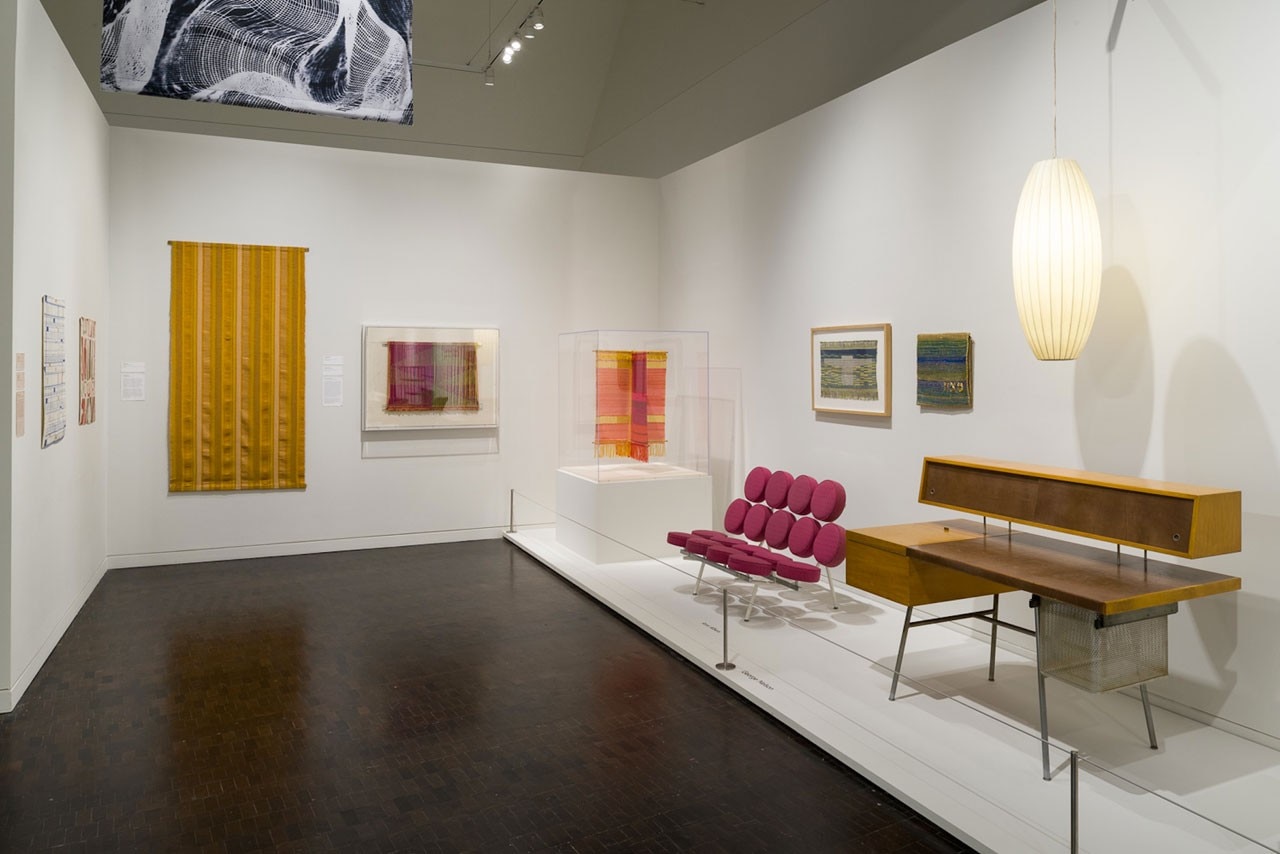
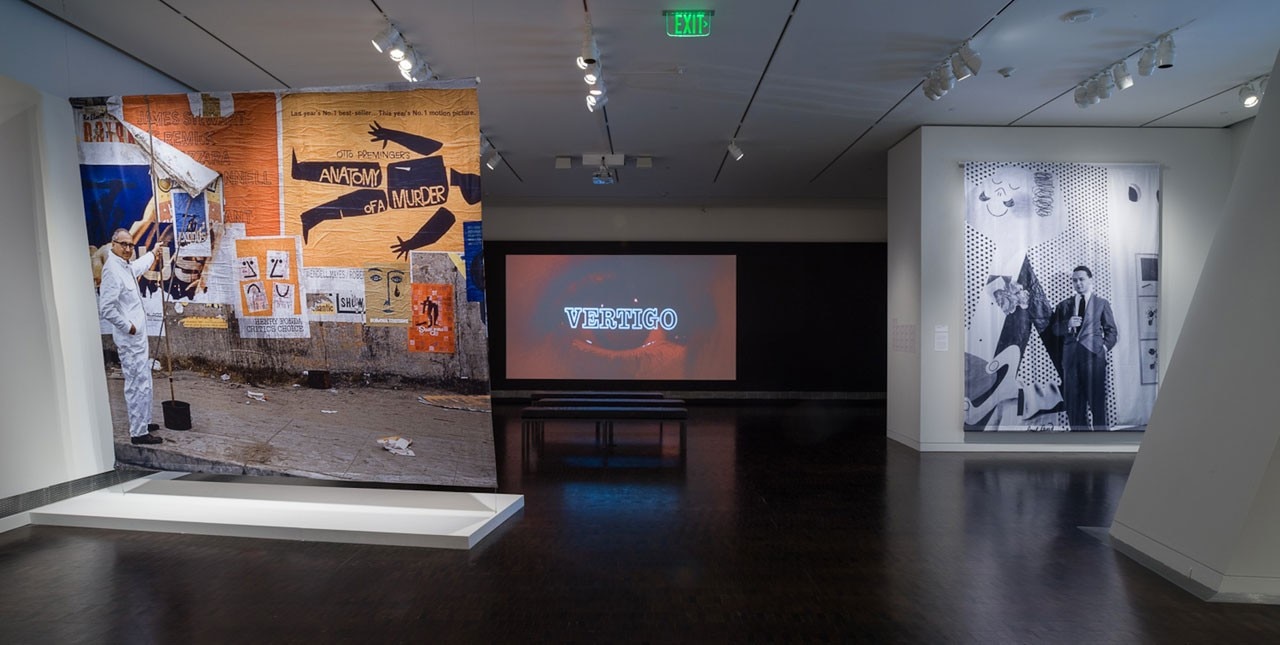

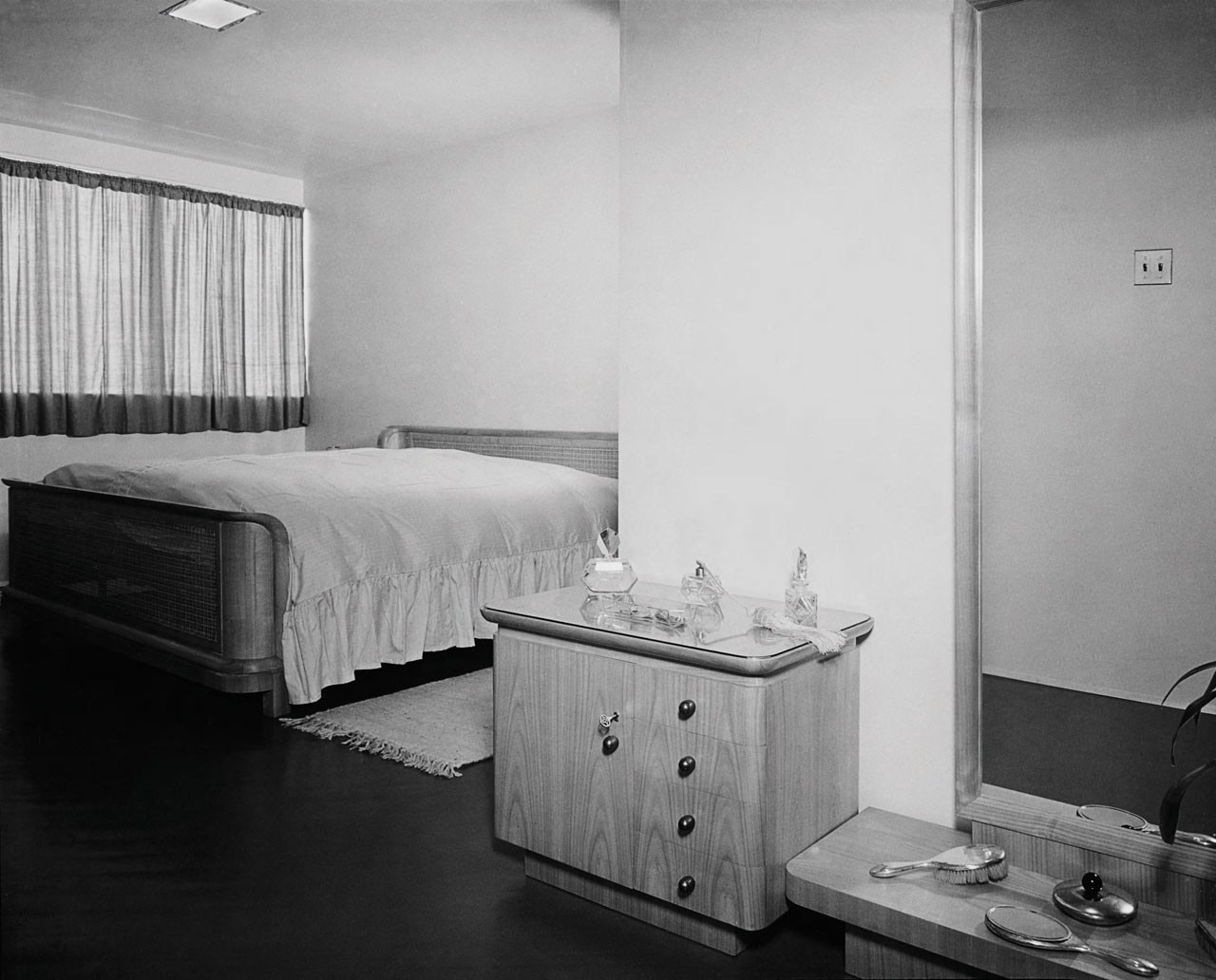
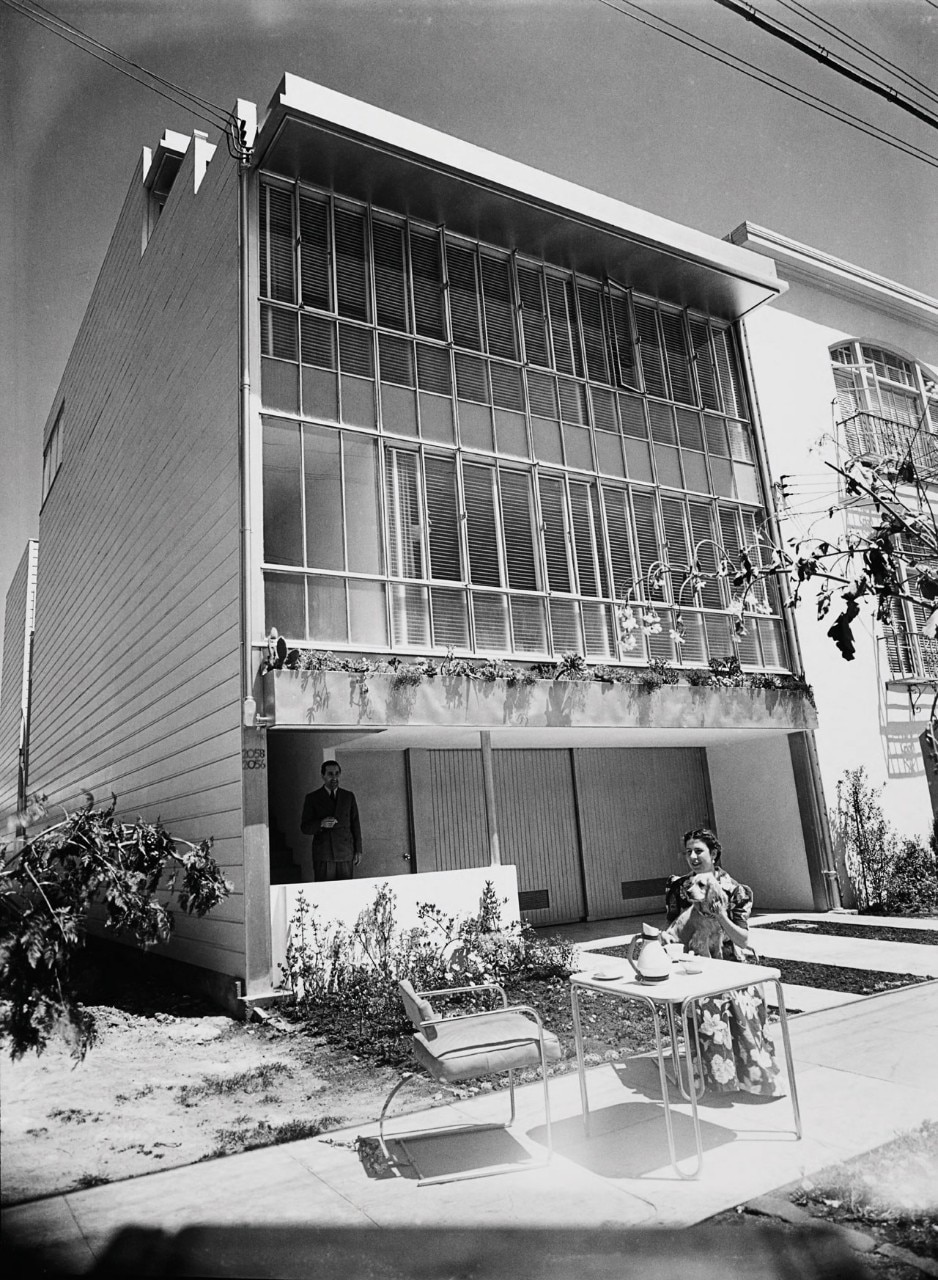
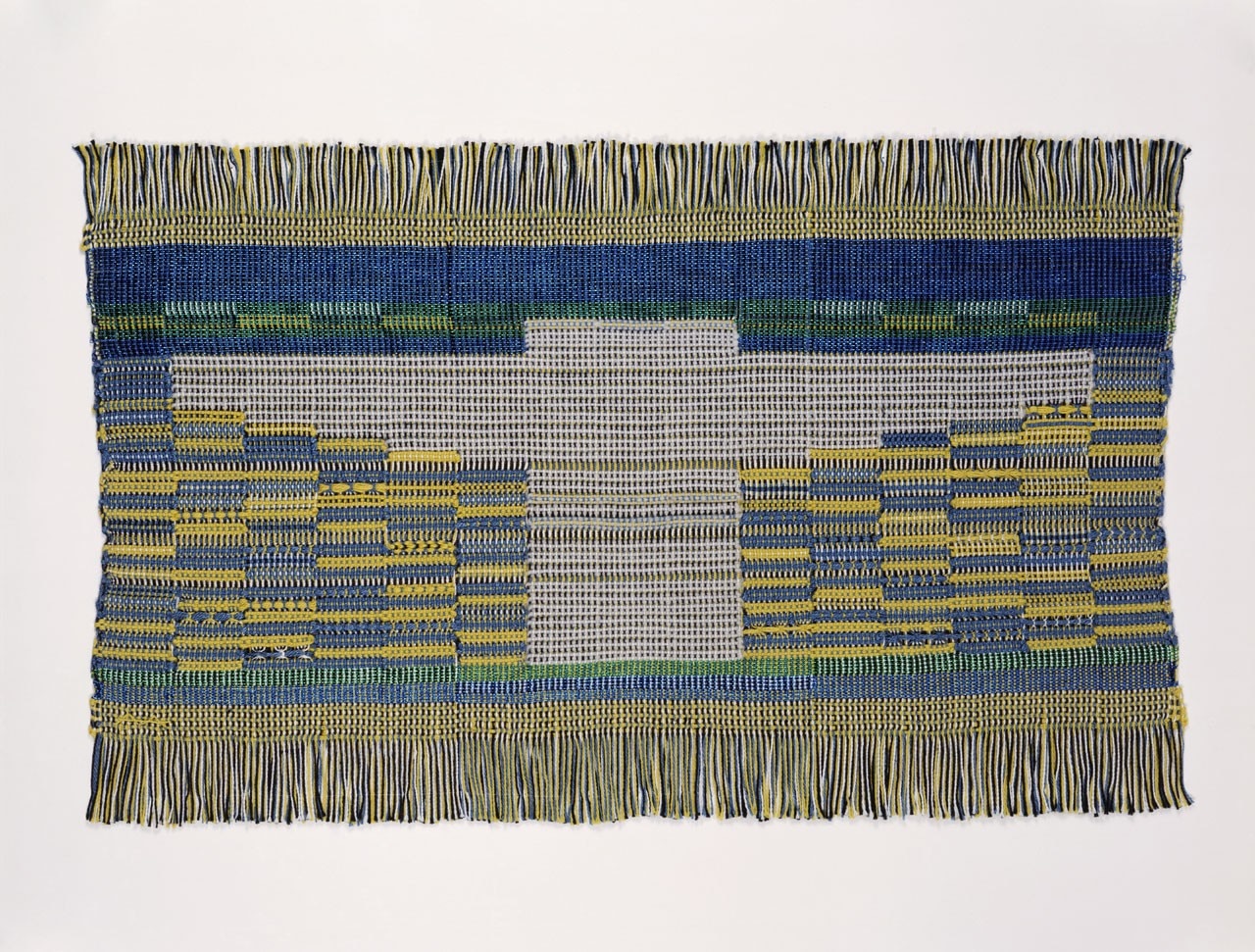
Finally, much of post-war America’s evolution was thanks to the growth of the large corporations, the fortunes of which were often linked to the creation of a strong corporate image by graphic designers such as Paul Rand, whose logos for IBM and Warner Bros – some of the many he designed – are quite rightly an inextricable part of the popular culture of the second half of the 20th century.
Were there still a need to remember the huge drive to innovation carried forward in the name of a new pragmatism after the Great War and the ensuing loss of faith in the technicist and Functionalist optimism of early architectural Modernism, the exhibition at the Contemporary Jewish Museum offers a chance to think once more about the combined worth of a generation of thinkers of forms.
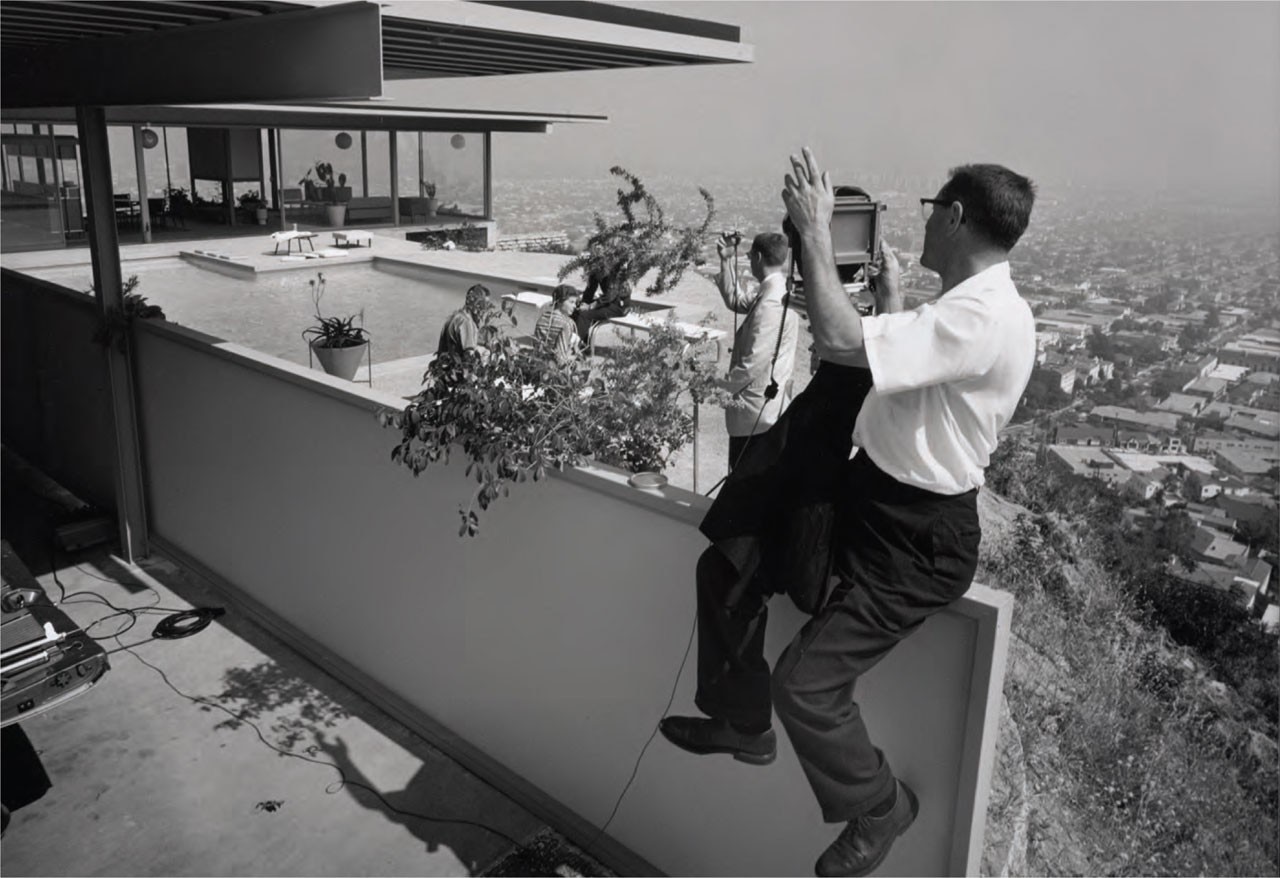
Until 6 October 2014
Designing Home: Jews and Midcentury Modernism
The Contemporary Jewish Museum, San Francisco


